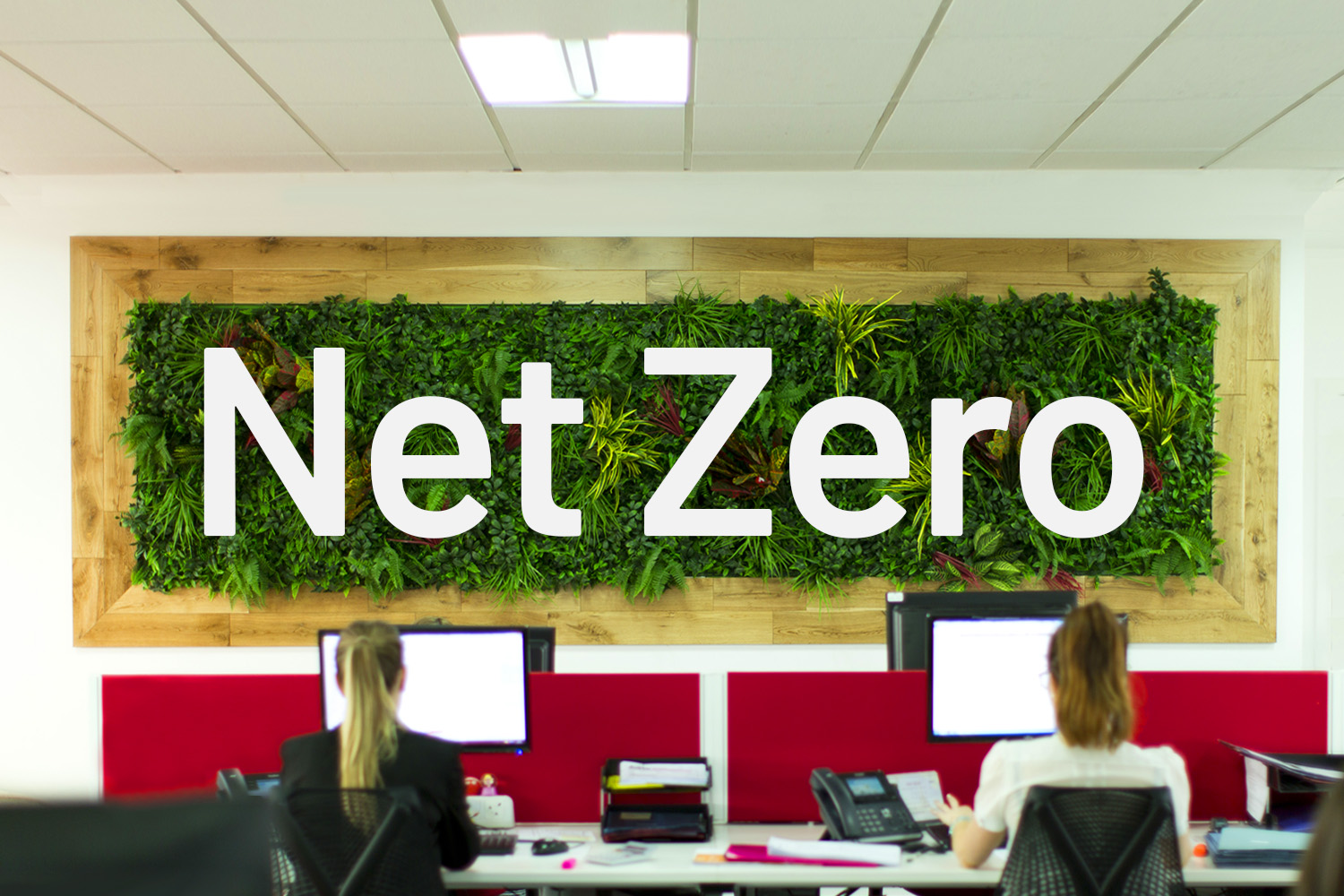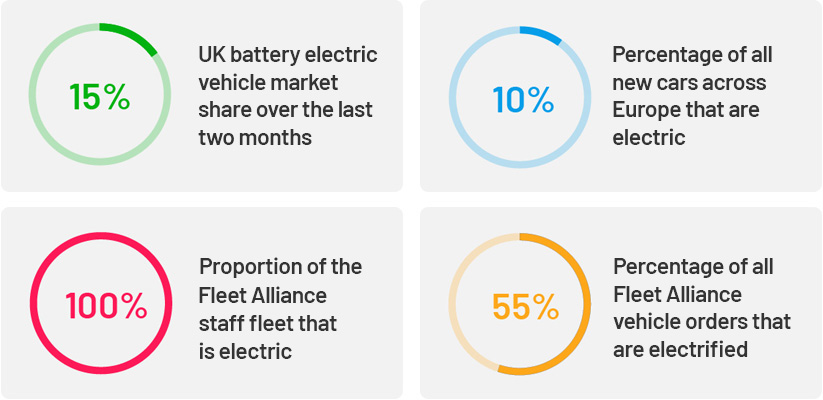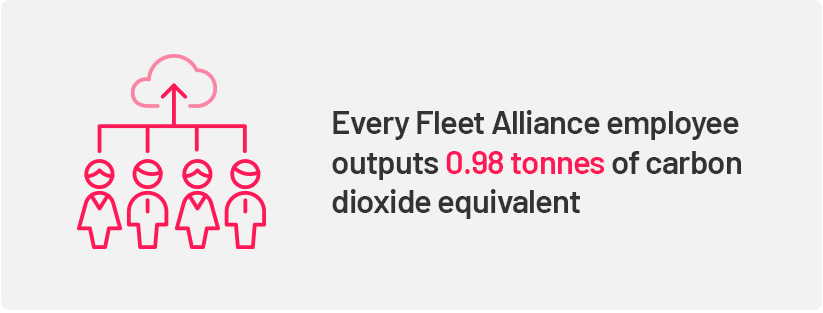S h a r e
From zero emission EVs to net zero humans


Posted by
Andy Bruce
December 2021
Let’s start with some good, green stats.
According to the Society of Motor Manufacturers and Traders (SMMT), September and October battery electric vehicle (BEV) sales accounted for more than 15% of the total UK car market. In Europe, a recent analysis by Schmidt Automotive Research revealed that during the first 10 months of 2021, one in 10 new cars going on the road has been an EV on an annualised basis

The shift towards electrification is reflected in the Fleet Alliance staff fleet which is now 100% whilst 55% of the vehicles ordered by our clients in October were electrified.
So four great reasons to think that the COP26 effect is rippling through society in general (while helped by some beneficial taxation breaks it must be said).
But before we start patting ourselves on the back, thinking what a great green job has been done, let’s stop a minute and consider if this is all that needs to be achieved.
Going green is part of a bigger picture, a jigsaw of parts that can often seem kaleidoscopic. But let’s take the bigger picture first. The UK is on the road to net zero by 2050, which is essential if we are going to play our part in reducing temperature change to within 1.5 degrees C, otherwise, climate change will be, in all probability, quite catastrophic.
Net zero is a term that’s often used but possibly not always fully understood. In essence, it means balancing the amount of carbon emitted into the atmosphere with the carbon removed. In other words, our actions must not increase the volume of carbon going into the atmosphere.
Which actually means we need to cut the amount of carbon we produce. In all areas. In our homes, in transport, in our farming, in industry and in our businesses. These are the parts of the jigsaw.

Where we work are places that emit plenty of carbon – we probably don’t think about it too much. To be fair, it’s not something that we had considered much at Fleet Alliance until we started our own journey towards net zero, part of which is the switching of our corporate customers to EVs, which we are planning to do by 2030. Having started on the electrification plan, it soon became obvious that we needed to do more. So we’ve asked the ECO3 Partnership for a carbon audit.
They’ve crunched the numbers, and as a business, we output 0.98 tonnes of carbon dioxide equivalent (CO2e) per employee. The plan, clearly, is to reduce this amount substantially.
So while the corporate cars on the Fleet Alliance fleet are now all fully zero-emission, to bring down that 0.98 figure per person requires some individual actions. Think of it as really tiny pieces of the jigsaw.
We’ll be setting out and quantifying a series of targets with ECO3 for implementation, to help us plan our path towards net zero. This will focus on reduction, removal, offset and elimination.
It may consider:
- Review of utilities and water procurement strategy, considering new contracts from 100% green sources (renewables for electricity and biomethane in lieu of gas).
- Improving the disposal of our waste value chain.
- Renewables installation on sites.
- Energy efficiency initiatives for our M&E building services plant.
- Investing in renewable energy and verified carbon offset projects locally and globally.
- Review building stock efficiency and consider alternative premises.
- Increasing access to public and/or alternative transportation (like cycling) and reducing emissions from private transportation through lower usage linked to a hybrid working culture. As the business grows a continuing commitment to an EV Company Fleet Policy, improved logistics and journey planning.
- Targeting carbon neutrality through appropriate offsets after reduction and elimination.
- Gaining a better understanding of our Scope 3 Indirect emissions upstream and downstream in the company’s value chain.
We’ll be looking to our staff, as always, for new ideas and suggestions as part of our Environmental Ambitions Programme. But we’re serious in our aim. We want our business to be net zero by 2030. And that means we need net zero emission humans, too.
That way we’ll have even greater green stats.
You also might like…
If you liked this article then check out our posts about similar topics
A New Year’s Resolution for Smarter Fleet Management
Every January, businesses everywhere make the same promises: cut costs, simplify operations, do more with less But if...
2025 Wrapped: My First Year as a Fleet Alliance Appointed Representative
As 2025 draws to a close, it feels like the right time to pause, take stock, and look back on my first year as an Appoin...
FRED 82: Turning a Compliance Challenge into a Fleet Opportunity
FRED 82 may look like just another accounting standard, but for organisations running sizeable vehicle fleets, it repres...
Budget 2025 – the key points for fleets and EV salary sacrifice drivers
The 2025 Budget confirms what many in the fleet and salary sacrifice world have been expecting for some time: as electri...
Best company cars to beat BIK in 2025/2026
Sales of electric cars to fleet and business customers continue to head the new car market in 2025 After four months,...
A Great Place to Work 2025: Fleet Alliance
We’ve done it again! Fleet Alliance is A Great Place to Work - officially We’ve been certified A Great Place to ...
First Drive: The Y Factor – Why Tesla’s Shape Shift is Turning Heads
I didn’t want to love it I did The new-shape Model Y fixes the looks, elevates the drive, and makes a strong case on p...
The top 10 fleet cars from the Munich Motor Show
The Munich Motor Show - which is officially known as IAA Mobility - recently took place It’s a hybrid show demonstrati...
Ready to make the management of your fleet more efficient?
Request a call back
